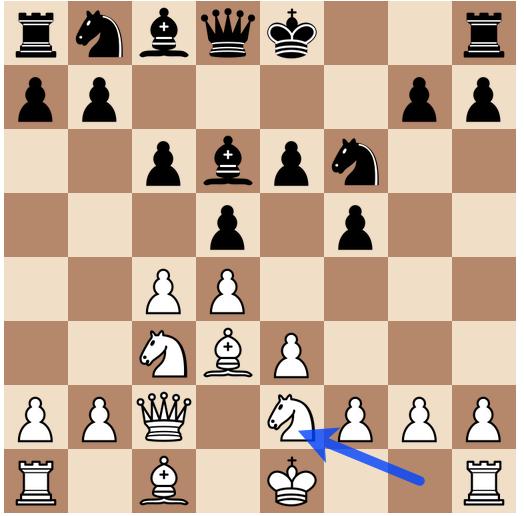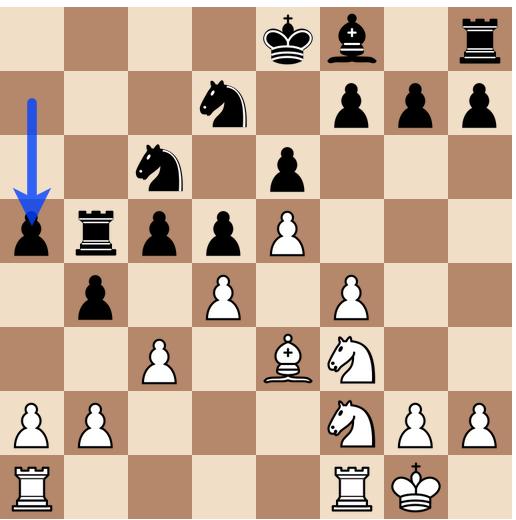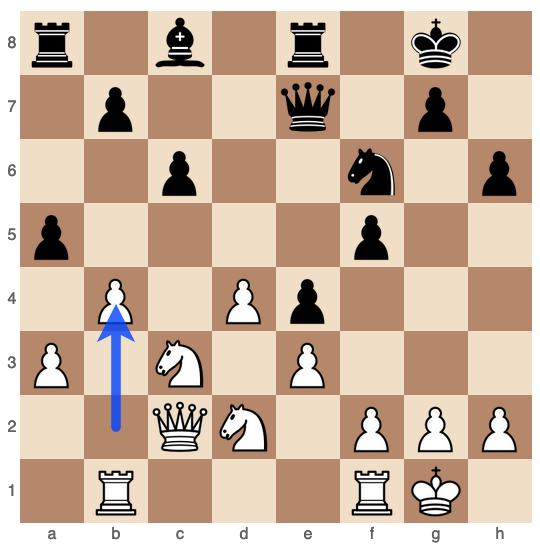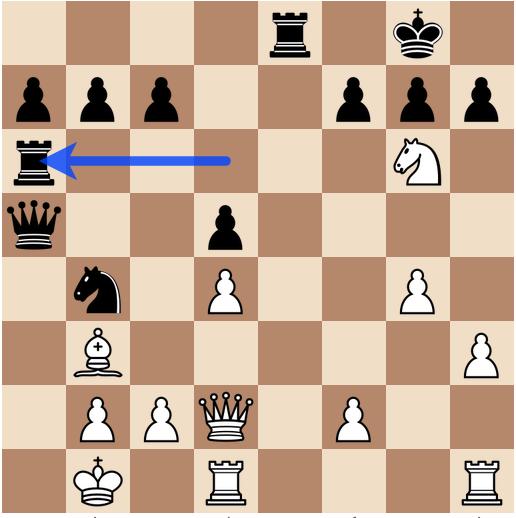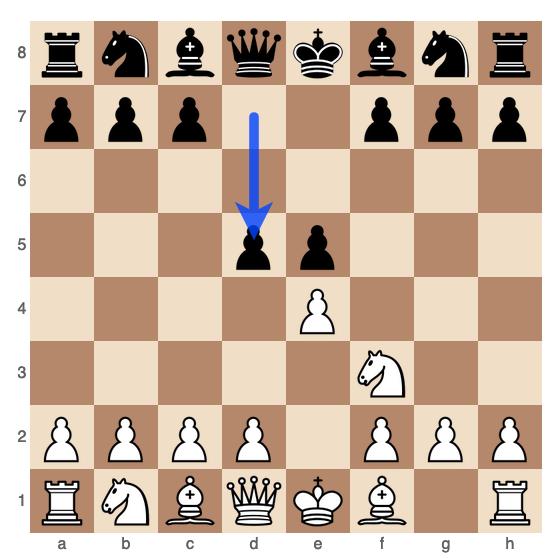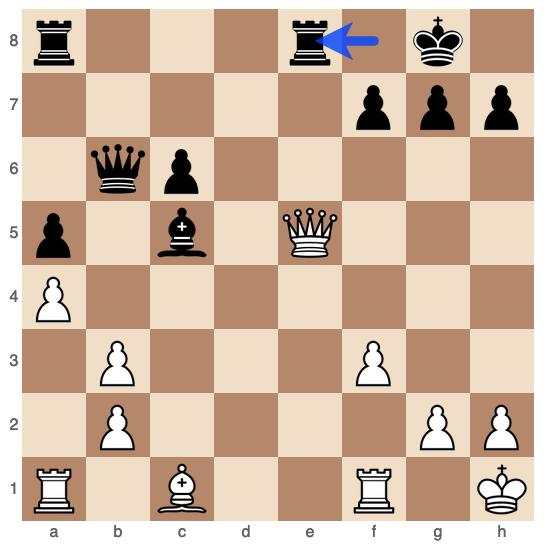In this game from the Titled Tuesday tournament, Guillermo Baches (White) faces Pawel Lopusiewicz (Black) in a dynamic encounter. The game opens with the Nimzo-Indian Defense, Rubinstein Variation, an opening known for its flexibility and positional richness. This encounter demonstrates how to exploit imprecise play in a tense middlegame to secure a decisive victory. Let’s dissect the phases of the game to uncover the lessons hidden in each move.
Opening
The game begins with the Nimzo-Indian Defense:
- d4 Nf6 2. c4 e6 3. Nc3 Bb4 4. e3 O-O 5. Bd2 d5
White adopts the Rubinstein Variation, a solid and positional line that avoids early tactical complications. White’s setup aims for harmonious development and central control while keeping flexibility. Black plays logically, seeking counterplay with …b6 and …c5.
By move 10, Rc1, White demonstrates a clear understanding of the opening principles by prioritizing piece activity and central influence. Black’s pawn structure with …c5 signals an imminent middlegame battle.
Middlegame
The middlegame begins to heat up after White castles:
- O-O c5 11. a3 Bxc3 12. Bxc3 c4
Black closes the center with 12…c4, aiming to restrict White’s light-squared bishop. However, this pawn structure gives White a long-term positional advantage due to Black’s locked-in dark-squared bishop on c6. White’s pieces gain active squares while Black’s counterplay becomes harder to orchestrate.
By move 14, Ne5, White seizes the initiative, activating the knight toward the kingside. Black’s pawn push …b5 creates an overextended pawn structure that White later exploits.
16. Qh3 is a thematic attacking move, signaling White’s intent to create threats against Black’s weakened kingside. This builds up pressure with the queen and knight working in tandem. Black counters inaccurately with …b4, allowing tactical opportunities for White.
Tactical Flurry
White unleashes a sequence of precise moves starting with 17. Nxc6, exploiting Black’s poorly coordinated position. The following sequence reveals key tactical weaknesses:
- 18. axb4 opens the a-file, giving White significant control.
- 19. Bxb4 solidifies White’s material advantage while keeping active control over the board.
- 20. Bxe4 simplifies the position into a winning endgame scenario.
Black’s counterplay dissipates as White’s active pieces dominate. The game ends abruptly after 21. Ra1, where Black’s position collapses under the pressure.
Endgame (or Lack Thereof)
While the game technically doesn’t reach an endgame, White’s commanding position after 21 moves renders Black’s counterplay futile. The centralized rooks and active minor pieces secure the win. Black resigns after 21. Ra1, acknowledging the inevitability of material loss and White’s superior position.
Conclusions and Lessons
- Flexibility in the Opening: The Rubinstein Variation showcases how patience and flexibility in the opening can lead to long-term positional advantages.
- Exploiting Pawn Structures: Black’s overextended pawns on b5 and c4 became significant weaknesses. Always consider the long-term consequences of pawn moves.
- Coordination Wins Games: White’s piece coordination, especially the activity of the queen, knight, and rooks, highlighted the importance of teamwork in chess.
- Seize Tactical Opportunities: The sequence starting with Nxc6 demonstrates the value of recognizing and exploiting tactical imbalances immediately.
Aphorisms from the Game
- “The pawn you push today may become your greatest weakness tomorrow.”
- “An active piece is worth a pawn, but an active plan is worth the game.”
- “Coordination is the art of making your pieces sing in harmony while your opponent’s struggle in disarray.”
This game is a masterpiece in turning small advantages into decisive ones, a hallmark of a seasoned International Master.

